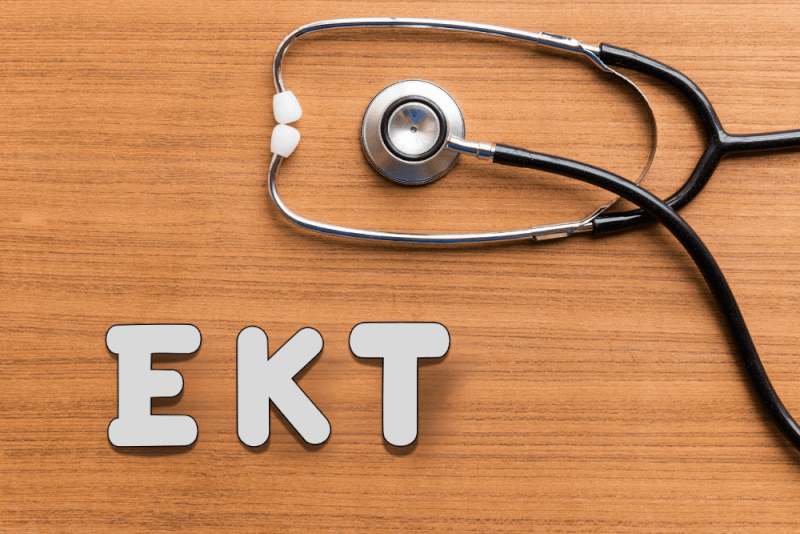30 Second Summary
- Agoraphobia is the fear of situations where it would be difficult for people to escape or where there is a limited ability to get help if things go wrong.
- Symptoms of agoraphobia include panic attacks, shortness of breath, heart palpitations, sweating, trembling, nausea, dizziness, numbness and tingling.
- Psychotherapy and medication are used together in the treatment of agoraphobia.
- If left untreated, agoraphobia can significantly affect a person's daily life.
What is agoraphobia?
Anxiety disorders that cause excessive fear of certain situations are called phobias. Agoraphobia, on the other hand, can be explained as the fear of situations where it would be difficult for people to escape or where the possibility of getting help if things go wrong is limited. Agora means the city square where people gather.
People suffering from this anxiety disorder also have problems entering public places. These may include using public transportation, being in a crowd in open or closed spaces, or waiting in line. People with agoraphobia tend to have a companion with them when entering environments that may cause increased anxiety. If agoraphobia progresses, people may have fears that prevent them from leaving their homes.
Symptoms of Agoraphobia
Symptoms of agoraphobia include some states of fear. These include the following:
- Not being able to use public transportation
- Not being able to be in public areas such as bridges, parking lots or shopping malls
- Not being able to be in enclosed spaces such as small shops or movie theaters
- Inability to be in crowded environments
- Not being able to wait in line
- Not being able to leave home alone
The above-mentioned and similar situations cause people to worry. People who begin to feel panic in these situations fear that they will not be able to escape in the event of any embarrassing or disabling events. For these reasons, people with agoraphobia also experience the following symptoms.
- Concern
- Excitement
- Alienation from other people
- Feeling disconnected from other people
- Anxiety about being in closed environments such as elevators
- Feeling anxious about being in public places such as markets or shopping malls
- Fear of being alone in social situations
- Fear of leaving home
Agoraphobia is usually accompanied by panic attacks. For this reason, people with agoraphobia also experience panic attack symptoms. Panic attacks cause physical symptoms instead of psychological symptoms in patients. For this reason, the symptoms observed when people with agoraphobia have panic attacks include the following.
- Increased heart rate
- Chest pain
- Difficulty breathing
- Choking sensation
- Dizziness
- Nausea
- Urge to vomit
- Tremors in arms, legs and voice
- Diarrhea
- Abdominal pain
- Numbness and tingling in the arms
- Numbness and tingling in the legs
- Numbness and tingling in the face
People with agoraphobia often experience panic attack symptoms, causing them to avoid these areas and agoraphobia to deepen. This situation is also the cause of a vicious circle.
Causes of Agoraphobia
The causes of agoraphobia are not yet well understood. In general, the fact that agoraphobia is frequently encountered in people with panic attacks is thought to be the underlying cause of panic attacks. Panic disorder is a mental condition characterized by short but intense attacks of fear.
Approximately one third of people with panic disorder also suffer from agoraphobia. There are also cases where agoraphobia is seen alone. Factors that trigger the development of agoraphobia in people are as follows.
- Family history of agoraphobia
- Drug addiction
- Substance abuse
- Being abused
- Obsessive compulsive disorder
- Claustrophobia
- Social phobia
- Anxiety disorder
- Depression
Factors that increase the risk of agoraphobia
Agoraphobia can occur in people of both sexes and all ages. However, symptoms usually appear between the ages of 25 and 35. It is also more common in women than in men.
People who feel discriminated against are among the groups at risk for agoraphobia. Especially for this reason, people with anxiety disorders are more likely to develop agoraphobia.
Another risk factor for agoraphobia is panic attack disorder. In addition, patients with agoraphobia are more likely to have panic attacks. Therefore, both situations are interconnected. Other anxiety disorders that may develop in people with agoraphobia include generalized anxiety disorder and social anxiety disorder.
In addition, factors that increase the risk of agoraphobia include the following:
- Those with different phobias
- People who are physically or emotionally traumatized
- Environmental stressors caused by low socioeconomic status
- Abuse
- Loss of a parent
- Unemployment
- Being bullied
- Family history of panic disorder or agoraphobia
- Having a generally anxious or tense temperament
Diagnostic Criteria (Tests) for Agoraphobia
People with agoraphobia should consult a psychiatrist as soon as possible if the anxiety they experience starts to affect their daily life. Patients' complaints are important for the diagnosis of agoraphobia. For this, physicians ask patients some questions. The questions that may be included in these questions are the following.
- Do you feel any excitement or stress when you leave the house?
- Are there any situations that you are afraid of?
- Why are you afraid of fearful situations?
- Do you need the help of others to do tasks outside your home?
In addition to these and other issues, the health history of the patient and his/her family is key to the diagnosis of agoraphobia. However, for the diagnosis to be accurate, patients must answer all questions honestly and sincerely.
This information obtained from the client is based on the 5th edition of the American Psychiatric Association's Diagnostic and Statistical Manual of Mental Disorders. edition is compared with the criteria found in the edition. According to these criteria, patients should feel excessive fear in at least two of the following situations in order to be diagnosed with agoraphobia.
- Being alone in environments outside the home
- Waiting in line
- Crowded environments
- Narrow spaces such as elevators
- Indoor spaces such as meeting rooms or cinemas
- Market areas
- Public transportation
Patients who experience severe fear in at least two of these criteria are also expected to experience recurrent panic attacks. These seizures are supportive diagnostic criteria for the diagnosis. For this reason, the following should also be among the symptoms that should be present in patients:
- Behavioral changes resulting from panic attacks
- Fear of losing control or having a heart attack
- Fear of an increase in the number and severity of panic attacks
Agoraphobia treatment methods
Agoraphobia is one of the most difficult diseases to treat. Many different treatment modalities are used to treat agoraphobia. In general, these treatment methods are applied in combination.
Psychotherapy
Psychotherapy sessions with a psychologist or psychiatrist give patients the opportunity to talk about their fears and their triggers. These regular sessions increase patients' awareness of their fears and their causes, and guide them in solving these problems. Medication is also used to enhance the effects of psychotherapy sessions. These short-term therapies aim to help patients learn to cope with their fears.
Behavioral psychotherapy is generally preferred in psychotherapies. With behavioral psychotherapy, patients' distorted views and feelings about agoraphobia are replaced with healthy feelings and thoughts.
Exposure therapy
Exposure therapy is also used to help patients overcome their fears. In this application, patients are allowed to encounter odors in a slow and controlled manner. Progressing in small steps allows patients to get used to the situations they fear over time and not feel any emotion.
Medicine
Anxiolytics and antidepressants are generally included in the drug groups used in the treatment of agoraphobia.
Lifestyle changes
Although some changes that patients can make in their lives do not eliminate their anxiety, they reduce the worry and anxiety that patients feel on a daily basis. This is an important step in helping patients to benefit more, especially from their treatment. These changes include the following.
- Doing deep breathing exercises, yoga or meditation
- Eating a diet rich in seasonal vegetables, whole grains and protein
- Exercise every day if possible, 3 to 4 times a week if not possible
How can people with agoraphobia help themselves?
The basis of treatment for agoraphobia is for people to learn to control the symptoms caused by their anxiety disorder. In addition, for the treatment of agoraphobia, it is absolutely necessary to seek help from psychiatrists who are experts in their field. In addition, people can use certain methods to alleviate symptoms and make treatment go faster.
Slow breathing
The rapid breathing of patients during panic attacks causes the symptoms caused by panic attacks to be more severe. For this reason, during a panic attack, people should slow down their breathing as much as possible and focus on the expansion of the abdomen while breathing.
Relaxation techniques
Learning relaxation techniques and practicing these exercises regularly reduces anxiety levels. Detailed information about relaxation exercises that allow the muscles to relax gradually can be obtained from experts.
Gradually increasing exposure
Exposure, which refers to a controlled confrontation with the feared environment, is also known as systematic desensitization. If this technique is practiced regularly, there is a decrease in people's fears.
How to prevent agoraphobia?
The biggest factor in agoraphobia is the fear of having a panic attack. Therefore, in order to prevent agoraphobia, people need to learn to cope with their anxiety. The methods used in the treatment of agoraphobia are also applied to prevent agoraphobia. In addition, in order to prevent agoraphobia, people need to make some changes in their lifestyles. We can list these changes as follows.
- Practice breathing exercises
- Exercise regularly
- Including healthy foods in your diet
- Abstaining from alcohol and drugs










